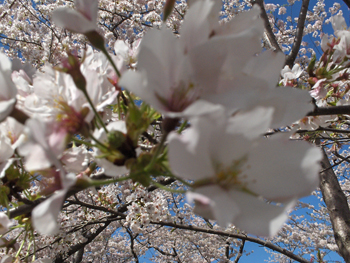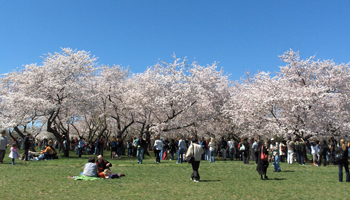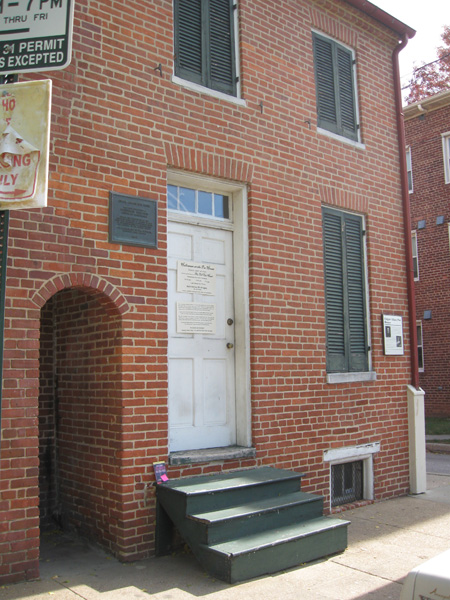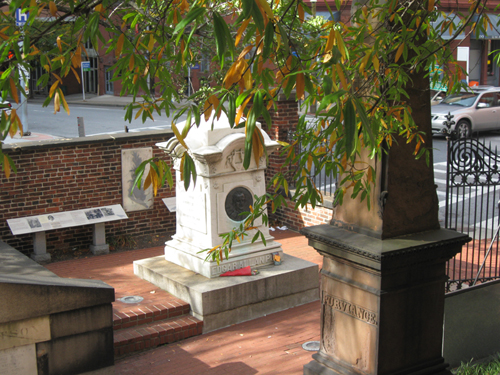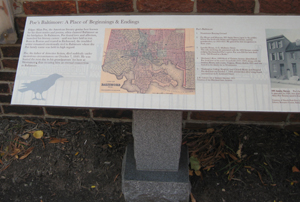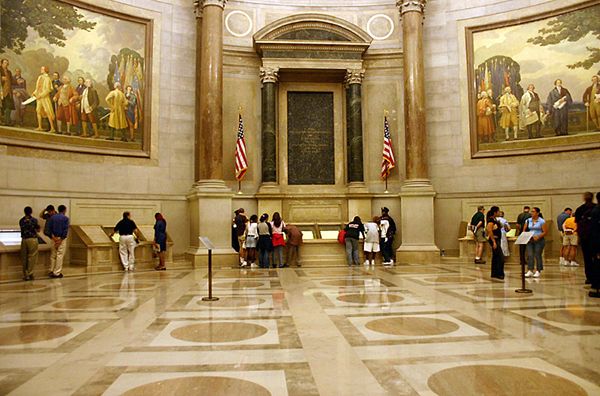Archive for the ‘adventure’ Category
Choose Your own Adventure Series
For the past 20 Wednesdays, we have enjoyed bringing you installments of the Adventure Series, highlighting something different in the Washington, D.C., Metro Area. Many of these are options for part of your own BookCrossing Journey at the 2011 Convention. We’re sad to see this series come to an end–especially when there’s much more we could talk about–but we want to put all our attention into planning an exciting convention worthy of the 10th Anniversary of BookCrossing.
There is more to do & see in the Washington, D.C., area and we wanted to share with you all the topics we considered for additional Adventure Series posts:
With so many things to see and do, how will you choose?
Adventures at the National Cherry Blossom Festival
This post is part 20 and the final installment of our Wednesday Adventure Series. Each week we will highlight something different in the Washington, D.C., Metro Area, many of which will be options for part of your own BookCrossing Journey. With so many things to see and do, how will you choose?
Choose wisely: Are you registered for the convention? If so, please fill out the Saturday Survey to let us know what you’re thinking about choosing on Saturday.
In 1912, Tokyo mayor Yukio Ozaki gave Washington, D.C., a gift of over 3,000 Japanese cherry trees to celebrate the friendship between the two nations. A group of American school children reenacted the event in 1927, and the first National Cherry Blossom Festival was held in 1935. Over the years, this annual commemorative has blossomed into one of the biggest events in the region.
The giving did not stop in 1912. In 1952, America got to return the favor to Japan by sending cherry tree budwood to help replenish the very grove in which many of the original gifted trees had been grown. First Lady Lady Bird Johnson accepted a gift of 3,800 more trees in 1965. Finally, in 1981, cuttings were sent to Japan to replace trees destroyed in a flood.
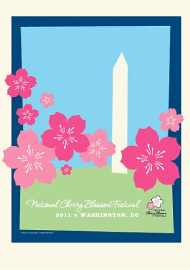 The festival kicks off with the Pink Tie Party at the Mayflower Hotel, and ends nearly three weeks later with the Cherry Blossom Family Bike Rally and Ride to support the American Diabetes Association. Other popular events include the Blossom Kite Festival, Opening Ceremony, the Sakura Matsuri Japanese Street Festival, fireworks, and the Cherry Blossom Festival Parade. In addition, several musical and cultural events are planned throughout the city, much of which is free to attend.
The festival kicks off with the Pink Tie Party at the Mayflower Hotel, and ends nearly three weeks later with the Cherry Blossom Family Bike Rally and Ride to support the American Diabetes Association. Other popular events include the Blossom Kite Festival, Opening Ceremony, the Sakura Matsuri Japanese Street Festival, fireworks, and the Cherry Blossom Festival Parade. In addition, several musical and cultural events are planned throughout the city, much of which is free to attend.
The Tidal Basin is still lined with cherry trees today, offering plenty of lovely photo ops every spring. Picking the cherry blossoms is against federal law, so if you cannot resist you should consider planting your own tree.
The 2011 National Cherry Blossom Festival runs from March 26 to April 10, but most of the trees will still be in bloom during the BookCrossing Convention. Even if they’re not, you can always make your own.
Adventures in Baltimore with Edgar Allan Poe
This post is part 19 of our Wednesday Adventure Series. Each week we will highlight something different in the Washington, D.C., Metro Area, many of which will be options for part of your own BookCrossing Journey. With so many things to see and do, how will you choose?
Help out the Convention: Have you seen the new Donate page? You’ll get a listing on the thank you page, wings for a month, and a say in what colors the convention team dyes their hair!
Baltimore, Maryland, is known to Edgar Allan Poe enthusiasts as the place that “defines the beginning and the end of his life.†Poe worked and lived in Baltimore for many years. And it is in Baltimore that he died in 1849. You will find traces of Poe and references to him throughout the city of Baltimore. The Baltimore Ravens football team, for example, have mascots named Edgar, Allan, and Poe, who are ravens (after Poe’s famous poem).
One significant Poe site in Baltimore is the house on Amity Street where he lived with his aunt and cousin (his future wife, Virginia) for several years. It is thought that much of his early work was penned while he was at this house, including stories such as “MS. Found in a Bottle,†“The Visionary,†and “Morella†and poems to include “Enigma [on Shakespeare],†“Serenade,†and “The Coliseum.â€
Edgar Allan Poe was buried in Westminster Burying Ground, where you will find a grand, gothic church and catacombs. He was originally buried in a family lot and had no headstone for years after his death until a sandstone block with the number “80†was placed to mark his grave, which was neglected and overrun with weeds. In 1860, Poe’s relatives commissioned a small headstone, which was destroyed in a train accident before it even made it to the gravesite. A second stone was designed, but the family did not have the money to purchase it. Near the end of the Civil War, citizens raised half of the necessary funds for a Poe Memorial; the other half came from a single donor, Mr. George W. Childs of Philadelphia. Though it did not befall the calamity of his prior headstones, it does erroneously list Poe’s birth date as January 20 instead of January 19. The monument was placed in a distinguished position at the corner of the burial grounds in 1875. The Poe family plots are located on the other side of the burial grounds, so Poe’s remains were dug up and moved to the memorial site.
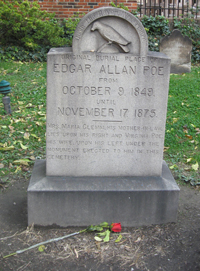 The memorial still stands today, as does a gravestone which supposedly marks the spot where Poe had originally been buried. That stone was initially placed in the wrong spot and was moved around several times, leading a few people to wonder not only where Poe’s original burial spot was but also if the man who was moved to the spot by the memorial is even Edgar Allan Poe. Between these post-mortem adventures and the still unsolved mystery of his death, it is somewhat fitting that Poe is so well-known for his tales of horror.
The memorial still stands today, as does a gravestone which supposedly marks the spot where Poe had originally been buried. That stone was initially placed in the wrong spot and was moved around several times, leading a few people to wonder not only where Poe’s original burial spot was but also if the man who was moved to the spot by the memorial is even Edgar Allan Poe. Between these post-mortem adventures and the still unsolved mystery of his death, it is somewhat fitting that Poe is so well-known for his tales of horror.
Many Baltimore residents love mysteries as much as Poe did. The mystery of the Poe Toaster is one that may never be solved. This anonymous stranger visited Poe’s grave on the night of Poe’s birthday every year from 1949 until 2009. He would leave three roses on Poe’s grave (for Poe, Poe’s mother-in-law, and Poe’s wife) and drink a toast with cognac. He did not appear at the grave in 2010 or on January 19 of this year, leading everyone, including Jeff Jerome of the Edgar Allan Poe Society, to believe the tradition has ended. Many people still visit the memorial on Poe’s birthday as well as throughout the year.
Other Poe-related sites in Baltimore include Church Hospital (where he died), Fell’s Point (where he may have frequented taverns), Lexington Market (where he bought goods), the Latrobe Home (where Poe’s “MS. Found in a Bottle†was awarded a fifty-dollar prize in a contest sponsored by the Baltimore Saturday Visitor), and the modern day Annabel Lee Tavern (named after another of Poe’s poems).
Visiting several historic Poe sites is part of the Baltimore trip that you can choose for a Sunday add-on. The Poe house is now a museum, but it is not open on Sundays. You will be able to walk around Westminster Burying Ground, however. If you cannot attend the Baltimore trip, you can experience Edgar Allan Poe’s Baltimore using a wonderful interactive map showing places in Poe’s time and places today.
Adventures at the Bureau of Engraving and Printing
This post is part 18 of our Wednesday Adventure Series. Each week we will highlight something different in the Washington, D.C., Metro Area, many of which will be options for part of your own BookCrossing Journey. With so many things to see and do, how will you choose?

The Bureau of Engraving and Printing (B.E.P.) is mostly known for printing paper currency used in the United States. However, it’s also responsible for printing Treasury securities, military commissions and award certificates, and security documents and identification cards for a variety of Government agencies. It even printed stamps from 1894 until 2005. What it is not responsible for is coinage, which is produced in Philadelphia and Denver at the United States Mint. There are two locations of the B.E.P.: Fort Worth, Texas (where the 2005 BookCrossing Convention took place) and Washington, D.C. (where the 2011 BookCrossing Convention will take place).

Some fun facts about the B.E.P. and money include:
· A bill (or note) weighs about 1 gram
· The largest denomination note ever printed was a $100,000 Gold Certificate, Series 1934
· The Secretary of Treasury is responsible for choosing the design for the notes
· By law, only portraits of deceased individuals may appear on currency
· A $1 bill’s lifespan in circulation is roughly 42 months, during which time its travels may be tracked at wheresgeorge.com.
· Bally Bucks issued at the 2011 Convention are not legal tender
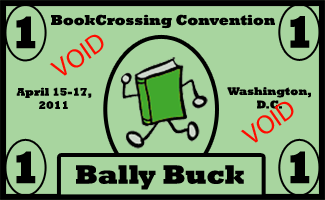
The B.E.P. is integral to the US, as we use what it produces every day. However, it was not in the original government plan for the country. There was a drain on the supply of coin currency during the Civil War, so in 1861 the government realized another option should be instituted. A private company was hired to print Demand Notes (like IOUs from the Government). The sheets of notes were sent to the Treasury Department where many different clerks cut the notes apart and signed them.
It still took time and many changes to get from that stage to what we have today. The agency went through many names including: National Currency Bureau, Printing Bureau, Small Note Bureau, Currency Department, and Small Note Room. In 1874, congressional legislation made the name “Bureau of Engraving and Printing†stick.
By 1864, the B.E.P. already printed more than just currency and notes. They were responsible for producing Treasury bonds and even passports for the State Department. It wasn’t until the sale of bonds during World War I in 1918 that the power presses at the B.E.P. were redesigned to print eight notes per sheet instead of just four. Currency itself was redesigned in 1929 to standardize size, allow twelve notes to be printed per plate, and combat counterfeiters. Today’s bills are being redesigned slowly to combat modern day counterfeiters; the new $100 bill is just now being released with new security measurements. And today we use systems that can print 32 notes per plate in a process of inking, wiping, and pressing the paper (made of 75% cotton and 25% linen) into the plate where the engraved lines still contain ink.

You can see this process firsthand by touring the Bureau of Engraving and Printing, which is one of your Friday morning early bird add-on choices for the 2011 BookCrossing Convention. Guided tours are 30 minutes long and you will have a chance to visit the gift shop where you can buy anything from shredded money to sheets of uncut currency. You can find out more about the B.E.P. by visiting their aptly-named website: http://moneyfactory.gov.
Adventures at the National Archives
This post is part 17 of our Wednesday Adventure Series. Each week we will highlight something different in the Washington, D.C., Metro Area, many of which will be options for part of your own BookCrossing Journey. With so many things to see and do, how will you choose?
SPECIAL NOTICE: Don’t forget that we have some special deals for registered attendees!
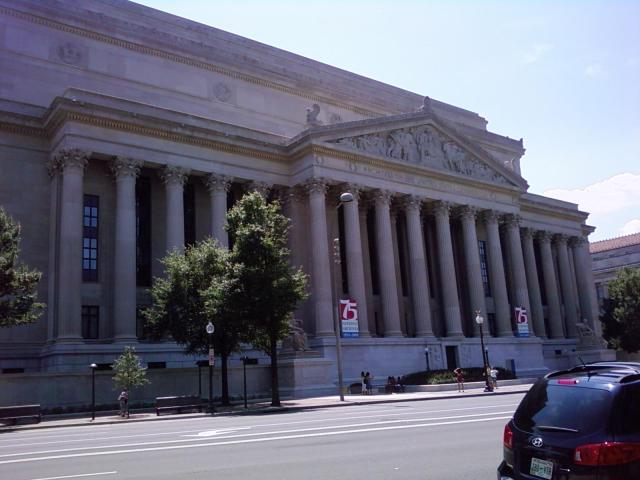
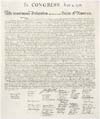 |
The National Archives houses and preserves the original copies of many of the most important historical documents for the United States. Some of the documents on display in the National Archives’ main chamber, called the Rotunda for the Charters of Freedom, include: the Declaration of Independence, the Constitution, and the Bill of Rights. Other documents on display include the Louisiana Purchase, and the Emancipation Proclamation. The Archives has a copy of the Magna Carta from 1297, however it is going off display in March 2011 for a year of restoration. | 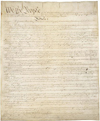 |
Another exhibit in the National Archives is the Public Vaults. Here, you can experience what it’s like to go behind the scenes at the archives in an interactive way. You will gain access to more than a thousand pieces such as the 1823 Copper Plate of the Declaration of Independence, George Washington’s handwritten letters, Abraham Lincoln’s telegrams to generals, audio recordings from the Oval Office. The Public Vaults consist of five different vaults, named after portions of the preamble to the Constitution:
*We the People- a collection of records about American citizens including immigration records, naturalization papers, draft cards, census records, and more.
*To Form a More Perfect Union- a collection of records concerning U.S. democracy, liberty, and law including congressional debates on Prohibition, discussion of UFOs, the Kennedy assassination, and the Watergate scandal.
*Promote the General Welfare- a collection of records about the U.S. frontiers including an exhibit about the moon landing and original patent drawings for famous objects such as the typewriter, pencil, and phonograph.
*Provide for the Common Defense- a collection of documents about wars and diplomacy including records from wars from the Revolutionary War to the Persian Gulf War, recordings from the Cuban Missile Crisis, and stories of heroism, inspiration, and sacrifice.
*To Ourselves and Our Posterity- a collection about the National Archives itself.
In the lower level of the archives, there is a café and the William G. McGowan Theater, which houses lectures or shows documentaries on a wide variety of subjects. The April 2011 schedule of events is not yet online.
The Boeing Learning Center allows you an even closer look at the documents, with copies, electronic resources, and educational workshops or presentations.
One special exhibit on display at the National Archives is called “Discovering the Civil War.†The “Consequences†portion of the exhibit will be on display at the Lawrence F. O’Brien Gallery in the National Archives Building through the Sunday of our convention (after which time the exhibit will move around the country). The exhibit features milestones and lesser-known documents about the Civil War including photos, an un-ratified version of the 13th amendment, and the Constitution of the Confederacy.
It wasn’t until 1934 that Congress decided to establish a national archive for documents. Until that time, each branch and department in the government was responsible for maintaining its own collections and records, resulting in the loss or destruction of many valuable documents. The National Archives now houses both classified and public domain documents created by the U.S. federal government, as well as materials from other sources or governments. There is currently a project with Google in place to digitize many of the public domain documents.
The National Archives and Records Administration maintains twenty-one facilities in different regions as well as the Presidential Library system, of which there are thirteen across the country. Another interesting function of the Archives is to declare new amendments to the U.S. Constitution. A proposed amendment needs three-fourths of the states to ratify it. The National Archives and Records Administration is in charge of keeping track of this.
A visit to the National Archives is one of the Friday morning Early Bird choices for the 2011 BookCrossing Convention. Though it does not take too long to look at the documents in the rotunda, the National Archives recommends planning on a visit of at least 90 minutes because of all the other exhibits and the interactive learning center. Because of the sensitive condition of many of the documents on display, photography and videotaping is not allowed inside the National Archives.





